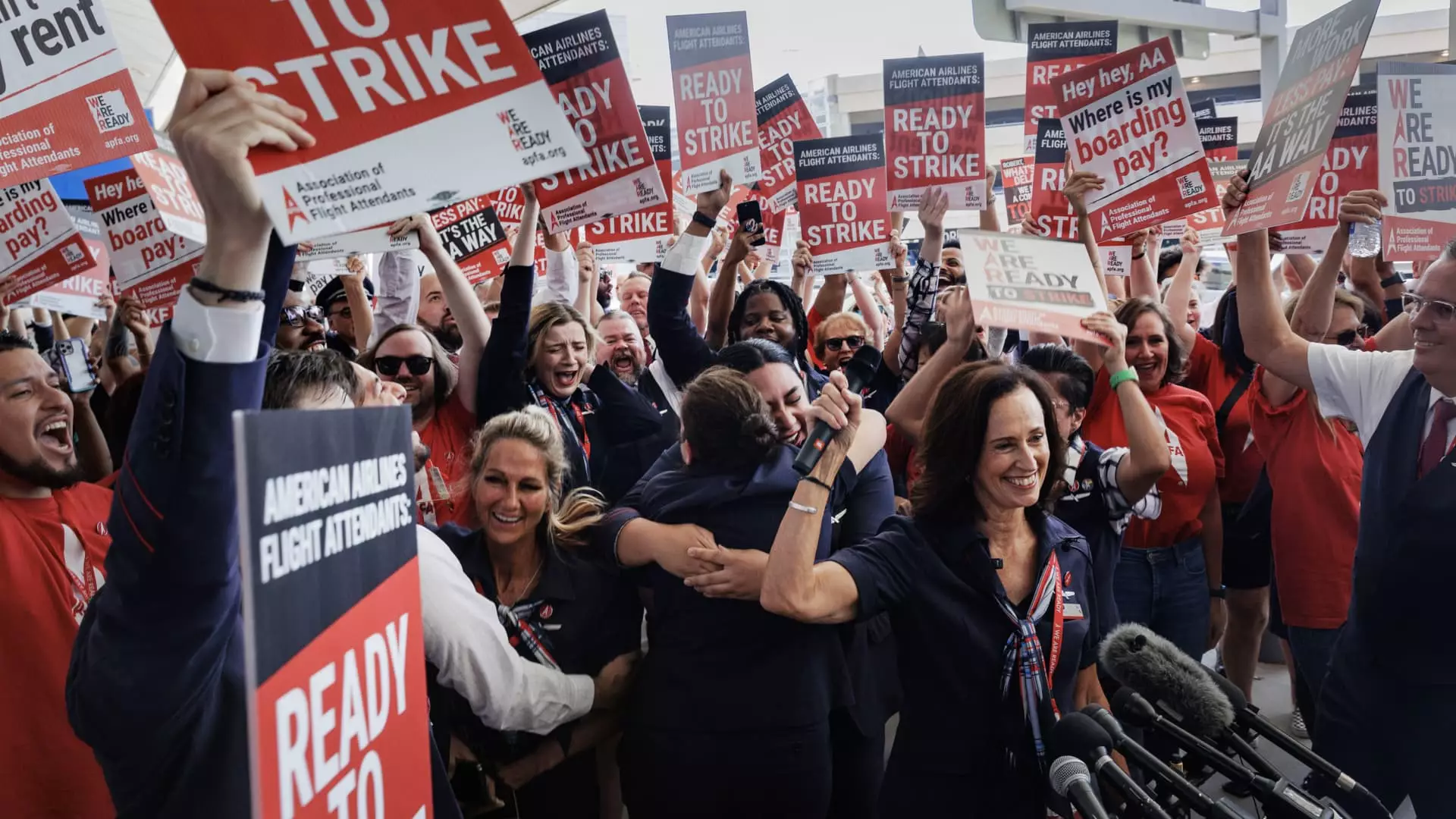In a significant development for the airline industry, flight attendants at American Airlines have overwhelmingly endorsed a new five-year labor contract, marking the end of a prolonged and often contentious negotiation period. With an impressive 87% of voters in favor of the agreement, this milestone signals a pivotal shift for the airline’s approximately 28,000 cabin crew members. The deal, which includes salary increases of up to 20.5% effective from the beginning of October, not only provides immediate financial relief to the attendants but also offers substantial retroactive payment to compensate for the lengthy negotiation process.
The Role of Union Advocacy
Julie Hedrick, president of the Association of Professional Flight Attendants, expressed elation regarding the outcome, highlighting the contract as an essential step in recognizing and valuing the contributions of flight attendants. This development is particularly noteworthy given that American Airlines boasts the largest unionized workforce among its peers in the aviation sector. The successful negotiation exemplifies the power of organized labor and underscores the importance of union representation in advocating for fair working conditions and equitable compensation, especially in a post-pandemic context where many workers are grappling with the rising cost of living.
The involvement of federal authorities, including Transportation Secretary Pete Buttigieg and Labor Secretary Julie Su, during negotiation sessions emphasizes the gravity of the situation faced not only by flight attendants but by workers across various industries. Their participation, alongside advocacy from over 160 lawmakers, illustrates a broader governmental recognition of the need for fair labor practices within the airline industry. The potential for disruption posed by a threatened strike also pressured American Airlines’ leadership to prioritize a resolution, showcasing how labor disputes can catalyze swift action from company executives in the face of widespread discontent among employees.
Continuing Challenges in the Airline Sector
While American Airlines’ flight attendants have reached a favorable agreement, challenges persist within the broader aviation landscape. Other airline unions, such as those representing United Airlines and Alaska Airlines cabin crews, remain embroiled in negotiations, indicating that similar state of unrest prevails throughout the industry. In a time when workers in various sectors, including the auto and entertainment industries, have successfully negotiated higher pay—sometimes through strikes—it begs the question of whether the momentum for change will continue to grow. The situation is particularly precarious for Boeing’s workforce, as thousands prepare to vote on a contentious new contract that could lead to a strike if rejected.
The resolution of American Airlines’ flight attendants’ contract serves as a pivotal example of how collective bargaining, supported by union solidarity and external governmental influence, can bring about significant positive change for workers. As flight crews nationwide reconsider their work conditions and pay structures in light of economic challenges, the success of this negotiation could inspire similar movements across the industry. The ongoing dialogue about fair wages and working conditions indicates a shifting landscape in aviation labor relations, one where employees increasingly assert the demand for equitable treatment and recognition of their essential roles in the industry.


Leave a Reply